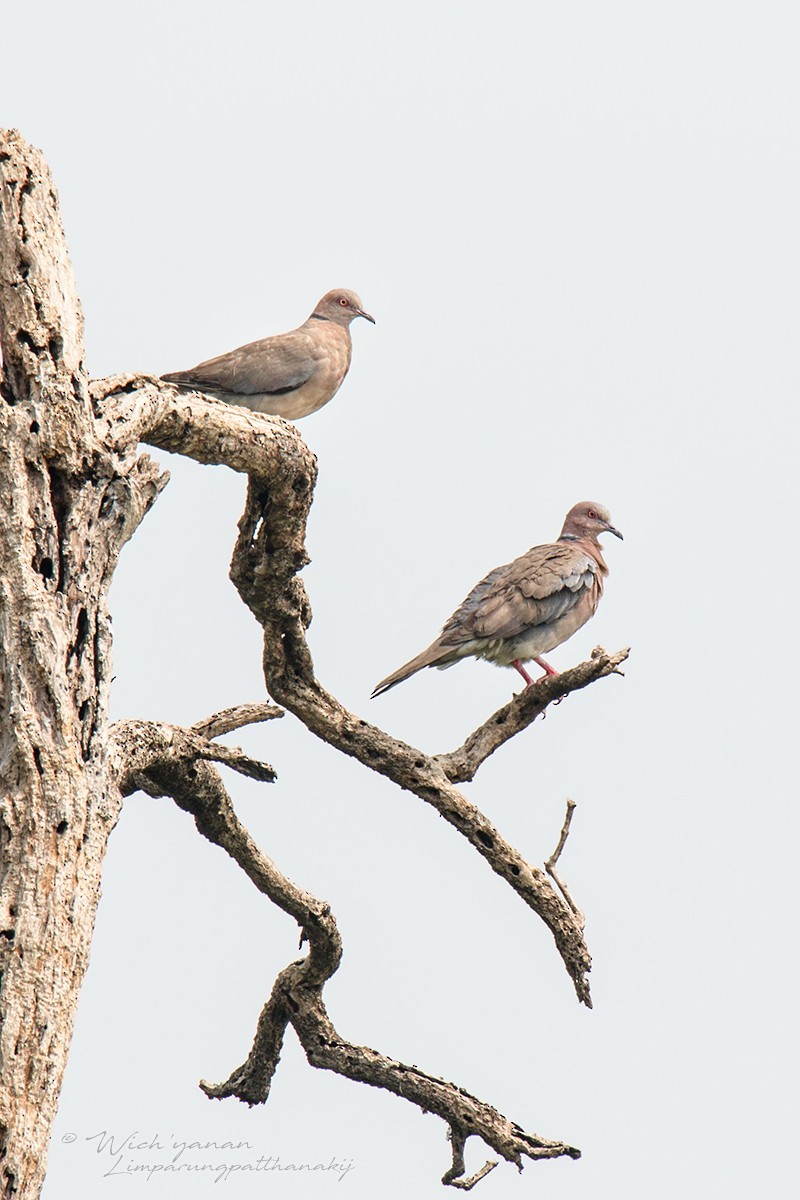Island Collared-dove
A species of Turtle-doves and Collared-doves Scientific name : Streptopelia bitorquata Genus : Turtle-doves and Collared-doves
Island Collared-dove, A species of Turtle-doves and Collared-doves
Botanical name: Streptopelia bitorquata
Genus: Turtle-doves and Collared-doves
Content
Description General Info
 Photo By Wich'yanan (Jay) Limparungpatthanakij
Photo By Wich'yanan (Jay) Limparungpatthanakij Description
The Sunda collared dove is a small to medium-sized bird which has a light, rosy hue around the neck and chest area, fading into the underside of the bird consists of a light caramel color, into a shade of cream at the base (start) of the tail. The start of the wings have a light grey tone, protruding to a steely grey hue near the end of the wing, all the way to the tip of the tail. The tail feathers under the bird are a 'eggshell' white, color. The birds tail consists of few layers from creamy colored to an ashen grey. The eye is quite rounded like that of most pigeons and doves. The eye color is a shade of orange caramel. The main distinguishing feature is a dusty black band that covers half the bird's neck. A white highlight can be seen above the band. The Philippine collared dove was once considered a subspecies. 
Size
33 cm
Nest Placement
Building
Feeding Habits
Island Collared-dove primarily consumes cereal grains and seeds, foraging on the ground amidst low vegetation. In autumn, berries are part of its diet. Occasionally, island Collared-dove eats insects such as caterpillars and aphids when other foods are scarce, revealing a versatile dietary adaptation.
Habitat
Island Collared-dove typically resides in subtropical or tropical environments, with a preference for moist lowland forests and mangrove ecosystems. Their habitat range extends to open, wooded regions and they are frequently observed in cultivated lands and urban settings. While they predominantly occupy the lowland areas, island Collared-dove can also be found at elevations up to 800 meters, although rarely above 600 meters. This species adaptability allows them to thrive across a range of forested to human-altered landscapes within broader geographical zones of the Java, Bali, and Lesser Sunda Islands.
Dite type
Granivorous
General Info
Feeding Habits
Bird food type

 Photo By Wich'yanan (Jay) Limparungpatthanakij
Photo By Wich'yanan (Jay) Limparungpatthanakij